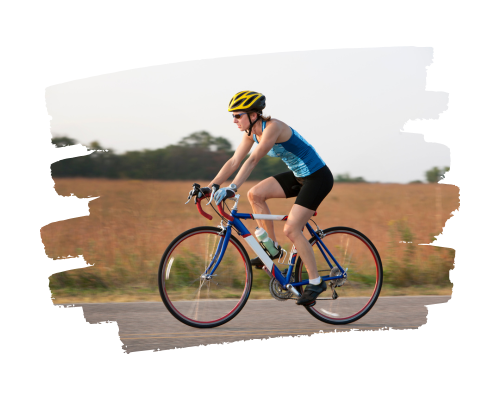Did you know that many women cyclists are riding the wrong size bike? It’s true! Riding a bike that is too big or small can lead to discomfort, poor performance, and a higher risk of accidents.
Don’t worry. We’ve got your back with tips to help you find your perfect fit based on our extensive experience in cycling and triathlons.
Understanding the anatomy of a bicycle frame is crucial when selecting the right bike size.
The frame dimensions, seat tube length, headtube length, and even chainstays and wheelbase all play a part in determining the perfect size for you.
So, are you ready to find your dream bike?
Let’s dive into choosing the right size based on your leg inseam, height, riding style, and personal preference.
Key Takeaways:
- A proper bike size is crucial for comfort, performance, and safety.
- Understanding the bicycle frame anatomy helps in selecting the correct size.
- Choosing the right size depends on leg inseam, height, and riding style preferences.
Table of Contents
Understanding the Anatomy of the Bicycle Frame
Deciding on the right bike size for women might seem challenging, but let’s break it down together! Understanding the basic anatomy of a bike frame will help you make a more informed decision.
In this section, we’ll discuss the essential components of a bike frame and how they relate to sizing and performance for female riders.
Seat Tube Length

Seat tube length is the vertical distance from the center of the bottom bracket to the top of the seat tube. This measurement is usually expressed in centimeters or inches.
So, how can you figure out the ideal seat tube length for a women’s bike? It mainly depends on the type of bike and your height. For instance, a typical seat tube length for a women’s road bike ranges between 44 and 58 cm or 17 and 23 inches.
Here are some general guidelines for different bike types:
- Road Bikes: 44-58 cm (17-23 inches)
- Mountain Bikes: 35-50 cm (14-20 inches)
- Hybrid Bikes: 40-53 cm (16-21 inches)
Of course, these numbers are just a starting point. To find the perfect fit, check the specific sizing chart provided by the bike manufacturer. Remembering that different brands might size their bikes differently is essential, so finding the exact fit requires research.
Remember that an ill-fitting bike can lead to discomfort and injuries.
So, consider the importance of finding the right seat tube length for your new bike, and you’ll enjoy a more comfortable and efficient ride with the proper fit.
Headtube Length
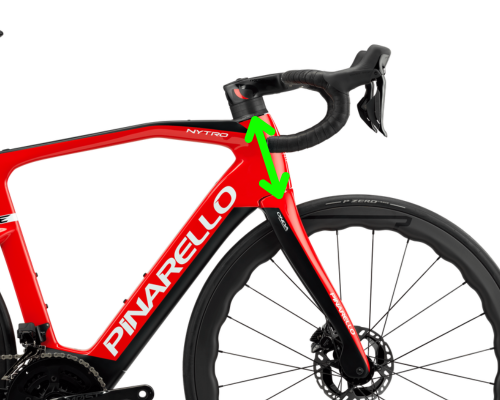
So, you’re curious about headtube length and how it affects bike sizing for women? The headtube length is the vertical distance from the center of the bottom bracket to the top of the headtube, measured in centimeters or inches.
This is quite an important measurement to remember when choosing a bike that fits comfortably.
For example, a typical headtube length for a women’s road bike is between 10 and 20 cm or 4 and 8 inches.
Now, you might wonder how this measurement affects the overall fit and comfort of the bike.
Longer headtubes lead to a more upright riding position, which can be great for people seeking a more relaxed setup.
On the other hand, if you prefer a more aggressive geometry with a lower stack height, you’d want a bike with a shorter headtube. Here are some guidelines to help you find the right headtube length for your needs:
- Road Bikes: Women’s road bikes generally have headtube lengths between 10 and 20 cm (4 and 8 inches). The shorter head tubes provide an aggressive riding position, perfect for racers and enthusiasts.
- Mountain Bikes: Women’s mountain bikes typically have headtube lengths between 9 and 22 cm (3.5 and 8.7 inches), catering to different riding preferences, from casual to aggressive off-road cyclists.
- Hybrid Bikes: For women’s hybrid bikes meant for a balance of comfort and speed, headtube lengths tend to fall between 12 and 19 cm (4.7 and 7.5 inches).
Remember, each bike brand may have its specific sizing chart, so it’s a good idea to consult the manufacturer’s recommendations for choosing the best headtube length for your riding style and preferences.
And remember to try out a few different bikes to find out what works best for you!
Effective Top Tube Length
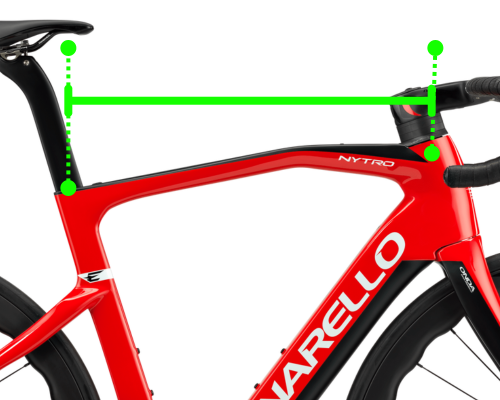
Did you know the effective top tube length determines your bike’s fit? In case you’re wondering, the effective top tube length is the horizontal distance from the center of the head tube to the center of the seat tube.
It’s commonly measured in centimeters or inches.
So, why is this measurement important?
Imagine you’re on your new bike, excited to hit the road. You start riding, and suddenly, you notice it’s either too stretched out or cramped up while seated.
That’s because the effective top tube length affects your reach – how far you must stretch out to reach the handlebars comfortably.
For a women’s road bike, a typical effective top tube length is 48 and 58 cm, or 19 and 23 inches. But remember that this can vary between manufacturers and bike models. Some brands have compact frame geometries, which could mean different center-to-center top tube measurements but still have the same effective top tube length.
As long as the effective top tube length stays the same, both bikes will place the rider comfortably.
To ensure you get the best fit, consider paying attention to the features below:
- Frame size: This is crucial to match your height. A smaller frame may result in a shorter effective top tube length.
- Reach: A good indicator of how comfortable you’ll feel while seated, and reach helps you understand the space between the saddle and handlebars.
- Saddle height: Adjusting the saddle to the correct height can also impact overall comfort and pedaling efficiency.
Next time you’re shopping for a women’s road bike, or any bike for that matter, keep an eye on the effective top tube length to find the perfect fit.
In the long run, you’ll enjoy your rides more and even avoid possible discomfort or injury by choosing the correct size.
Chainstays and Wheelbase
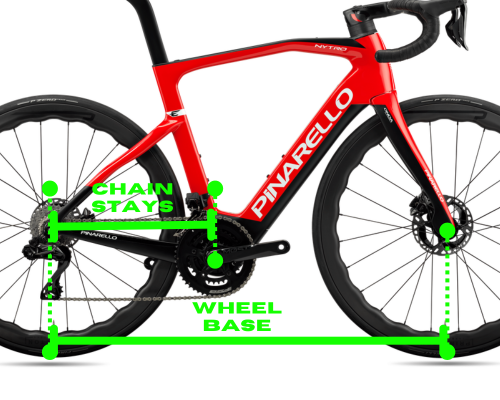
You ever wondered how the chainstays and wheelbase of a bike affect your riding experience?
Don’t worry. Let’s break down the basics.
Chainstays are the horizontal distance from the center of the rear axle to the center of the bottom bracket. On the other hand, the wheelbase refers to the horizontal distance from the center of the front axle to the center of the rear axle.
These measurements are given in centimeters or inches.
For instance, a typical chainstay length for a women’s road bike is between 40 and 43 cm (16 and 17 inches), while a typical wheelbase length for a women’s road bike is between 96 and 102 cm (38 and 40 inches).
Now, why do these measurements matter? Well, here’s how they affect your bike’s ride quality:
- Stability: An extended wheelbase usually provides excellent stability, keeping the bike planted on the ground. Perfect for those long, straight rides.
- Maneuverability: A shorter wheelbase and chainstay result in a more agile, responsive bike. If you love navigating through tight twists and turns, this is ideal.
In a nutshell, the chainstay and wheelbase measurements can significantly impact your bike’s performance, depending on your riding goals.
So, next time you shop for a bike, remember these crucial numbers to find the perfect fit for your riding style!
How Does Road Bike Geometry Affect Sizing?
Traditional, compact, and semi-compact road bike frames have distinct geometries and implications on bike size and fit, affecting your comfort and performance.
It’s essential to understand their differences and identify which is best suited for your needs.
Traditional Bicycle Frame

Traditional bicycle frames often feature a horizontal top tube, a longer seat tube, and a head tube. This design leads to a larger bike size and a more upright riding position, making it a popular option for those prioritizing comfort and stability.
So, why should you consider a traditional bicycle frame? Here are the pros and cons that can help you make an informed decision:
Pros
It is more comfortable for long-distance riding, thanks to the upright position.
Easier to reach the brakes and shifters, improving overall control and accessibility.
More stable and predictable handling, perfect for riders who prefer a steady ride.
More room for accessories and luggage, which comes in handy for long trips or commuting purposes.
Cons
It is heavier and less aerodynamic, making it less efficient on fast rides.
Harder to mount and dismount, as the larger frame can be challenging for some riders.
Less agile and responsive due to the heavier frame, especially when cornering.
Less adjustable and customizable in comparison to other bike frame designs.
Now, who would benefit the most from a traditional bicycle frame?
This type of bike is suitable for riders looking for:
- Comfort and stability over speed and performance
- A better fit for those with longer legs and shorter torsos
- A reliable option for rides on flat or rolling terrain
- The ability to carry more gear or luggage during their commutes
Here are some well-known models of bikes:
Remember, selecting the right bike frame mainly depends on your preferences, riding style, and body proportions.
By being aware of the features of traditional bicycle frames, you can make the best choice for your cycling adventures.
Compact Bicycle Frames

Compact bicycle frames are easily identified by their sloping top tube, shorter seat, and head tubes, which create a smaller overall bike size and encourage an aggressive riding stance.
For those contemplating a compact frame, understanding its advantages and limitations is key to making a sound choice.
Here’s what you need to know about compact bicycle frames:
Pros
The lighter and more aerodynamic design enhances agility and responsiveness during rides.
They facilitate easier mounting and dismounting, a plus in urban settings or when making frequent stops.
Compact frames offer more adjustability and customization, allowing for a tailored riding position.
Cons
They may compromise comfort during longer rides due to the aggressive posture they promote.
The smaller size could reduce stability and limited space for carrying accessories or luggage.
Brakes and shifters may be less accessible, which is an essential consideration for safety and convenience.
Ideal candidates for compact bicycle frames include:
- Riders who prioritize speed and performance over long-ride comfort and bike stability.
- Individuals with shorter legs and longer torsos.
- Those who frequently ride in hilly or mountainous areas.
- Cyclists who prefer traveling light without much gear or luggage.
Check out this famous bike:
In conclusion, when considering whether a compact bicycle frame suits your needs, weigh these pros and cons carefully. This frame type is tailored to riders who value performance and have specific body proportions or riding conditions.
Remember these points to determine if a compact frame aligns with your cycling goals and preferences.
Semi-Compact Bicycle Frames
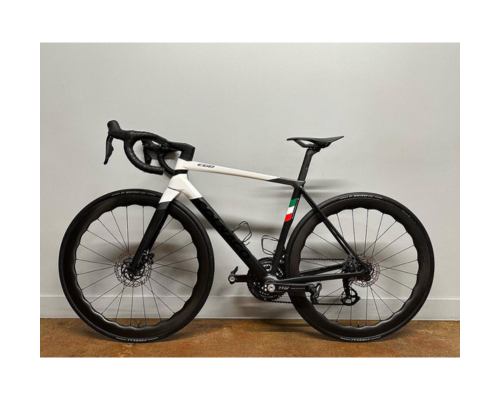
Let us introduce you to semi-compact bicycle frames. These unique frames have a slightly sloping top tube, medium seat tube, and headtube, resulting in a bike size that offers a balanced riding position.
Let’s take a closer look at the pros and cons of semi-compact bicycle frames:
Pros
A balance between comfort and speed
A mix of stability and agility
Adaptable adjustability and simplicity
Suitable room and weight for carrying gear
Cons
It is not as comfortable as traditional frames
Not as fast as compact frames
Not as stable as conventional frames
Not as agile as tight frames
So, how do you decide if a semi-compact frame is a good fit for you? Here are some guidelines to help you determine its suitability:
- Riders who want a versatile and adaptable bike
- Riders with balanced body proportions
- Riders tackling varied terrain
- Riders who carry moderate gear or luggage
Have a look at these renowned bicycles:
As you can see, semi-compact bicycle frames provide a delightful compromise in various aspects of cycling.
By opting for one, you can enjoy the best of both worlds: comfort and speed, stability and agility.
Keep this information in mind, and happy biking!
How To Find Your Perfect Match
Finding the perfect bike size for women can be challenging, but worry not! You can find the bike that fits you like a glove by considering your leg inseam, height, and riding style.
Here are some steps and tips to get you started on your journey.
Choose by Leg Inseam and Height
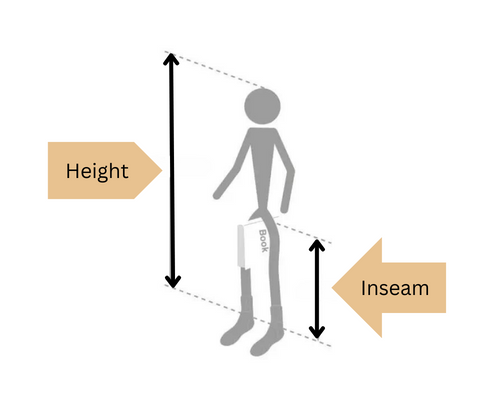
Leg inseam and height are the two most important factors for determining your bike size because they affect the bike’s standover height, reach, and saddle height.
Here’s a guide on how to measure these crucial dimensions accurately.
Measuring Leg Inseam:
- Stand barefoot with your back against a wall, feet shoulder-width apart.
- Place a book between your legs and slide it up until it touches your crotch.
- Mark the top of the book on the wall with a pencil.
- Measure the distance from the floor to the mark with a tape measure. This is your leg inseam measurement.
Measuring Height:
- Stand barefoot with your back against a wall and your feet together.
- Place a book on your head and press it against the wall.
- Mark the bottom of the book on the wall with a pencil.
- Measure the distance from the floor to the mark with a tape measure. This is your height measurement.
Now that you have your measurements look at this chart to help you determine the right bike size by leg inseam and height.
Remember, this is a general guideline, and you should always consult specific bike size charts from the manufacturer you’re interested in.
| Leg Inseam (in) | Height (in) | Bike Frame Size (cm) |
| 25-27 | 4’10-5’1 | 47-48 |
| 27-29 | 5’1-5’3 | 49-50 |
| 29-31 | 5’3-5’5 | 51-53 |
| 31-33 | 5’5-5’7 | 54-55 |
| 33-35 | 5’7-5’9 | 56-57 |
| 35-37 | 5’9-5’11 | 58-59 |
| 37-39 | 5’11-6’1 | 60-61 |
With this knowledge, you’re on your way to finding the perfect bike fit!
Choose by Riding Style and Preference
Bike size charts can offer some general guidance, but to find the perfect bike fit, it’s essential to try the bike in person or consult a professional bike fitter.
These size charts may not account for your riding style, body proportions, flexibility, and personal comfort levels.
When selecting a bike size based on your riding style and preferences, consider the following aspects:
- Comfort: How comfortable do you feel on the bike? Consider cushioning and support, pressure tolerance, and overall relaxation.
- Performance: How fast and efficient do you want to be on the bike? Take into account power, aerodynamics, weight, drag, and your level of competitiveness.
- Handling: Evaluate how well you can control and maneuver the bike, stability and agility requirements, and your confidence level.
- Adjustability: Assess your customization preferences and how often you change your riding conditions or goals.
Here are some tips on choosing a bike size based on your riding style and preferences:
- If comfort is your priority, opt for a larger bike with a more upright riding position, softer saddle, wider handlebar, and shorter stem.
- If you value performance, choose a smaller bike with a more aggressive riding position, firmer saddle, narrower handlebar, and longer stem.
- For better handling, select a bike size that matches your body proportions, a saddle that supports pelvic rotation, a handlebar aligned with your shoulder width, and a stem that balances your reach and steering.
- If you appreciate adjustability, go for a bike size with more room for modification, a saddle that can be moved forward or backward, handlebars that can be raised or lowered, and a stem that can be swapped or flipped.
Let Us Help You Find the Right Size Road Bike
To help you find the perfect match, consider some top road bike brands and models for women:
- Specialized: Known for offering a wide range of road bikes for women, from beginner to pro level. Models include the Ruby (endurance), Dolce (performance), and Tarmac (racing).
- Trek: A leader in innovation and quality with selections ranging from casual to competitive. Popular models are the Domane (endurance), Emonda (climbing), and Madone (speed).
- Giant: The world’s largest bike manufacturer offers affordable and reliable road bikes for women at various levels. Top-rated models include the Avail (endurance), Envie (sprinting), and Liv Langma (all-around).
Remember, you’re a unique cyclist, and there’s not a one-size-fits-all approach to finding the perfect road bike. Taking the time to identify your needs and preferences, as well as consulting sizing charts and expert advice, will be well worth it as you embark on your road cycling journey.
Frequently Asked Questions
Do you have questions about the perfect bike size for women? No worries, we’ve got you covered!
Let’s dive right in and address some of the most common questions.
Q: How do I know if my road bike is too big or too small?
Here’s a quick checklist to recap the signs of an improperly sized bike:
- Feeling stretched or cramped
- Pain or discomfort in various body parts
- Difficulty reaching brakes and gears
- Handling and stability issues
Q: What are the differences between women’s and men’s bike sizes?
The frame geometry of a women’s bike considers the average body proportions of female riders, such as shorter torso lengths and leg inseams. As a result, women’s bikes typically have a shorter stack height and reach length than men’s bikes. Another distinction is in the saddle shape– a women’s saddle generally is wider to accommodate the wider sit bones of female riders.
Q: I’m between sizes – which road bike size should I choose?
First, think about the type of frame you’re considering. For compact road bike frames, it’s generally recommended to go for the smaller size since they allow for more adjustability. On the other hand, the larger size of traditional road bike frames might be a better choice as they usually require a more upright riding position.
Next, consider your riding style and preference. Are you more into technical and agile riding, or do you prefer stability at higher speeds? Here’s a simple breakdown to help you decide:
- Smaller size: Best for technical riding, cornering, and riders with short torso or long legs. It offers a shorter wheelbase, making the bike more agile and playful.
- Larger size: Best for stability at higher speeds and riders with long torso or short legs. Provides a longer wheelbase for more stability.
Final Thoughts
We all know that feeling when looking for the perfect bike and unsure about the size.
It’s tough to decide, right?
First and foremost, comfort is key.
When searching for a bike, prioritize a comfortable fit to enjoy the ride to its fullest. Hybrid bikes are an excellent option for women as they provide a more relaxed and upright riding position.
What’s essential in finding your ideal bike size are your body measurements. Make a note of your inseam, height, and weight.
Here are a few tips to keep in mind:
- Measure your inseam and compare it with bike size charts
- Look for bikes with wheel diameters suitable for your stature (26, 27.5, or 29 inches for mountain bikes and 622 mm or 571 mm for road bikes)
- Account for personal preferences and riding style when considering bike sizes
Once you’ve narrowed down your options, don’t forget the tried-and-true method of test riding.
Nothing beats getting a feel for the bike in person to determine the optimal fit. When you’re testing a bike out, make sure you evaluate:
- Seat height and angle
- Handlebar reach
- Pedal position
After going through these steps, you’ll have a clearer idea of your perfect bike size. Finding the right fit will make a world of difference when it comes to enjoying a comfortable, efficient, and safe ride.
So, go ahead and begin your search for that perfect bike tailored specifically to you!

